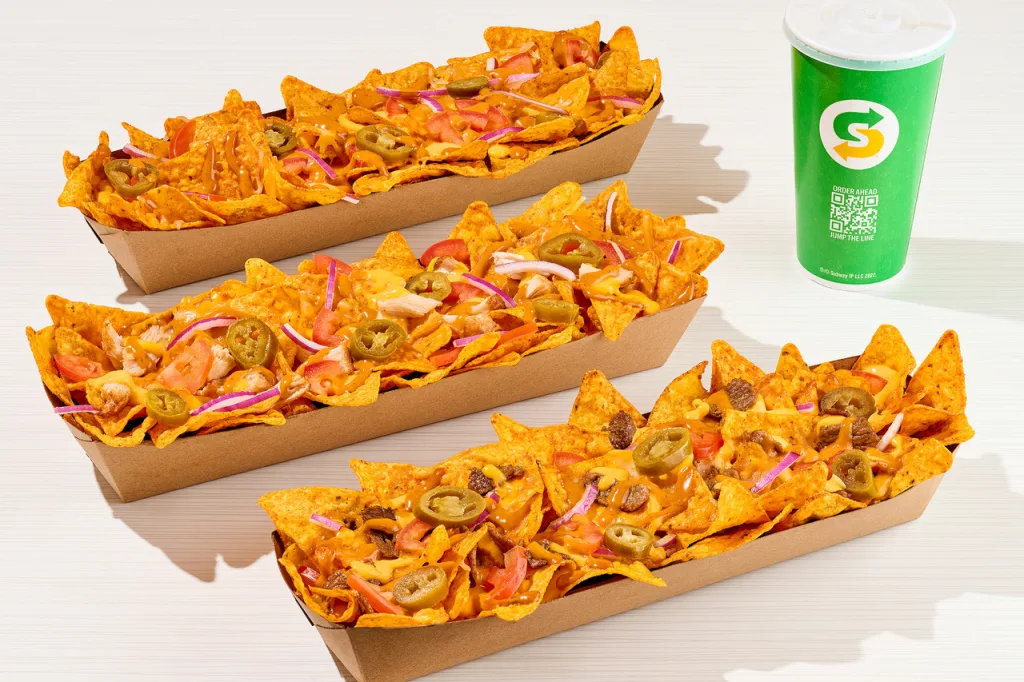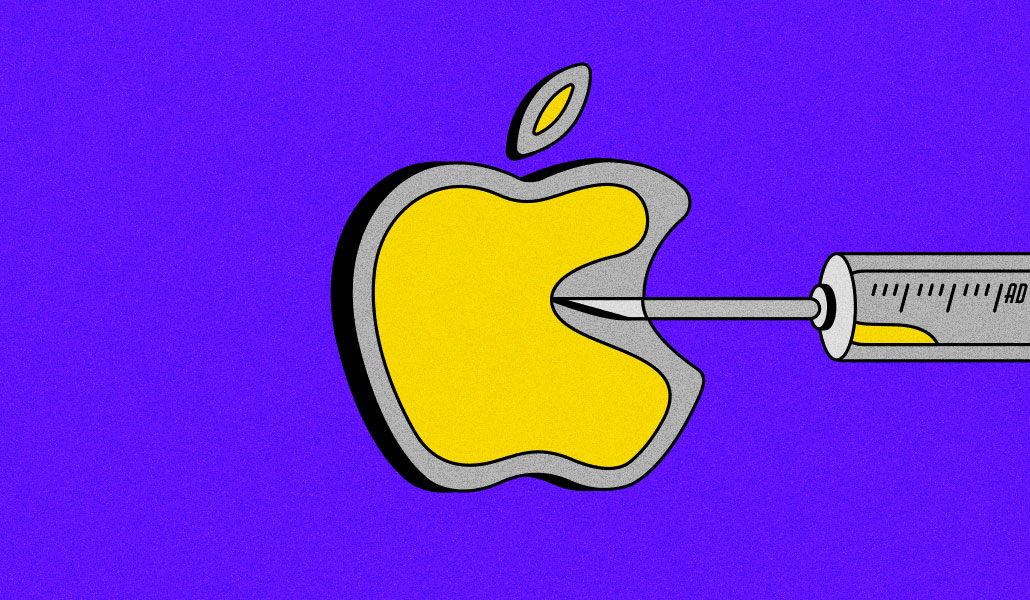How crunch took over our taste buds
Quiet is out and the “swicy” trend has calmed down. Now our taste buds are screaming for “crunch,” gritty textures, and noisy flavor experiences. Last year, noiseless squishy gummies and sweet-and-spicy, or “swicy” flavoring, were the breakout food innovations that took over the snack aisle. Remember the peelable mango gummy candy that went viral on TikTok? In 2025, food trend watchers, with a little help from TikTokers, have identified our top cravings. They include crispy foods, bold flavor mashups, and edible aquatic plants. The crunchier the better “‘Crunch’ is one of the trends that I’m excited about,” says Alyssa Vescio, Whole Foods Market’s senior vice president of center store merchandising, sourcing, and product development. “An area where we tend to see a lot of innovation is in the snacking category because people are always looking to discover the next ‘taste’ and ‘texture.’ I think crunch connects easily into the trends that we’ve seen in snacking. But now we’re seeing it come out of snacking and go into other spaces,” Vescio says. Whole Foods, which operates more than 500 stores across the U.S., identified crunch as the “texture of the moment” in its annual food trends report, which highlights the grocery chain’s top food predictions for the year. According to Vescio, food shoppers are searching for crunchiness across their meals, from breakfast to lunch to dinner. Food brands are responding by delivering plenty of innovative crispiness, such as crunchier versions of the chili crisp, crunchy dehydrated fruits and vegetables such as mushrooms and okra, crunchy chocolates, fermented nuts, roasted chickpeas, and mushroom chips. The crunch texture is also popping up in beverages and desserts, she says, such as crunchy cinnamon sugar crystal toppings on coffee beverages and the crème brûlée espresso martinis with a hard crunch sugar surface that you crack before you sip. [Photo: Subway] Fast-food chain Subway planted its flag in crunchland, pairing up with Doritos to introduce a quirky limited-time concoction this month called the Doritos Footlong Nachos. Not to be left behind, Taco Bell announced last month that it is adding more crunch, cheese, and sauce to its toasted Cheddar Street Chalupas. It doesn’t end there. “You’re also seeing crunch in spices and seasonings. The number of people that I talk to who say, ‘Every time I make eggs, I put chili crunch on them’ or ‘Every time I have a dinner I put this textured seasoning on it,’ has increased tremendously,” Vescio says. A cultural signal Tastewise, an artificial intelligence-powered consumer research platform, continuously mines tremendous amounts of online data—millions of social media posts, online reviews, online recipes, and restaurant menus—globally to surface emerging food and beverage trends. Using its methodology, Tastewise analyzed the crunchy trend in the U.S. and found that over the past 12 months, social discussions involving the term crunchy have increased by about 13%. “This indicates not only a rising appetite for the sensory experience of crunch but also its resonance in how consumers talk about food online,” says Alon Chen, cofounder and CEO of Tastewise. According to Tastewise, three emergent consumer patterns are defining the crunchy trend. The company analyzes consumer needs at any given moment in time through how various dishes, ingredients, flavors, and textures are framed in menus, recipes, and social posts. It found that the number one reason fueling the need for “crunch,” based on significant growth in discussion on social media, was an association with comfort, such as comfort food. “This insight reframes crunch not just as energetic or exciting, but as comforting. This could be a new lens through which brands can market crispy products,” Chen says. Crunchy is increasingly associated with vegan offerings, showing that consumers are looking for textural satisfaction even in plant-based foods. And Peruvian cuisine has emerged as the fastest-growing culinary context for crunchy dishes with chulpi (or roasted) corn, crispy onions, and fried yucca being the top ingredients fueling the crunch texture in it, according to Tastewise. Among menu items, Tastewise’s analysis showed that 26% of restaurants in the U.S. currently offer items described as “crunchy” on their menus, which Chen says “represents a strong foothold in food service, often a bellwether for broader retail and CPG [consumer packaged goods] trends.” [Photos: Whole Foods] A new kind of crunch Crunch isn’t just for chips. Tastewise says the texture is being paired in several interesting ways—from indulgent to savory—with ingredients such as chocolate and pistachio (Hello Dubai chocolate viral TikTok craze!), cinnamon sugar, blood orange, chicken, and caramel apple. “I consider crunch a texture, not a flavor, and it gives you an experience,” says Sally Lyons Wyatt, global executive vice presiden

Quiet is out and the “swicy” trend has calmed down. Now our taste buds are screaming for “crunch,” gritty textures, and noisy flavor experiences.
Last year, noiseless squishy gummies and sweet-and-spicy, or “swicy” flavoring, were the breakout food innovations that took over the snack aisle.
Remember the peelable mango gummy candy that went viral on TikTok? In 2025, food trend watchers, with a little help from TikTokers, have identified our top cravings. They include crispy foods, bold flavor mashups, and edible aquatic plants.
The crunchier the better
“‘Crunch’ is one of the trends that I’m excited about,” says Alyssa Vescio, Whole Foods Market’s senior vice president of center store merchandising, sourcing, and product development.
“An area where we tend to see a lot of innovation is in the snacking category because people are always looking to discover the next ‘taste’ and ‘texture.’ I think crunch connects easily into the trends that we’ve seen in snacking. But now we’re seeing it come out of snacking and go into other spaces,” Vescio says.
Whole Foods, which operates more than 500 stores across the U.S., identified crunch as the “texture of the moment” in its annual food trends report, which highlights the grocery chain’s top food predictions for the year.
According to Vescio, food shoppers are searching for crunchiness across their meals, from breakfast to lunch to dinner. Food brands are responding by delivering plenty of innovative crispiness, such as crunchier versions of the chili crisp, crunchy dehydrated fruits and vegetables such as mushrooms and okra, crunchy chocolates, fermented nuts, roasted chickpeas, and mushroom chips.
The crunch texture is also popping up in beverages and desserts, she says, such as crunchy cinnamon sugar crystal toppings on coffee beverages and the crème brûlée espresso martinis with a hard crunch sugar surface that you crack before you sip.

Fast-food chain Subway planted its flag in crunchland, pairing up with Doritos to introduce a quirky limited-time concoction this month called the Doritos Footlong Nachos. Not to be left behind, Taco Bell announced last month that it is adding more crunch, cheese, and sauce to its toasted Cheddar Street Chalupas.
It doesn’t end there. “You’re also seeing crunch in spices and seasonings. The number of people that I talk to who say, ‘Every time I make eggs, I put chili crunch on them’ or ‘Every time I have a dinner I put this textured seasoning on it,’ has increased tremendously,” Vescio says.
A cultural signal
Tastewise, an artificial intelligence-powered consumer research platform, continuously mines tremendous amounts of online data—millions of social media posts, online reviews, online recipes, and restaurant menus—globally to surface emerging food and beverage trends.
Using its methodology, Tastewise analyzed the crunchy trend in the U.S. and found that over the past 12 months, social discussions involving the term crunchy have increased by about 13%.
“This indicates not only a rising appetite for the sensory experience of crunch but also its resonance in how consumers talk about food online,” says Alon Chen, cofounder and CEO of Tastewise.
According to Tastewise, three emergent consumer patterns are defining the crunchy trend. The company analyzes consumer needs at any given moment in time through how various dishes, ingredients, flavors, and textures are framed in menus, recipes, and social posts. It found that the number one reason fueling the need for “crunch,” based on significant growth in discussion on social media, was an association with comfort, such as comfort food. “This insight reframes crunch not just as energetic or exciting, but as comforting. This could be a new lens through which brands can market crispy products,” Chen says.
Crunchy is increasingly associated with vegan offerings, showing that consumers are looking for textural satisfaction even in plant-based foods.
And Peruvian cuisine has emerged as the fastest-growing culinary context for crunchy dishes with chulpi (or roasted) corn, crispy onions, and fried yucca being the top ingredients fueling the crunch texture in it, according to Tastewise.
Among menu items, Tastewise’s analysis showed that 26% of restaurants in the U.S. currently offer items described as “crunchy” on their menus, which Chen says “represents a strong foothold in food service, often a bellwether for broader retail and CPG [consumer packaged goods] trends.”

A new kind of crunch
Crunch isn’t just for chips. Tastewise says the texture is being paired in several interesting ways—from indulgent to savory—with ingredients such as chocolate and pistachio (Hello Dubai chocolate viral TikTok craze!), cinnamon sugar, blood orange, chicken, and caramel apple.
“I consider crunch a texture, not a flavor, and it gives you an experience,” says Sally Lyons Wyatt, global executive vice president and chief industry adviser for market research firm Circana.
“Crunch has always been something that consumers have gravitated to when you think about chips and crackers. But there are some innovations that have gone across the texture, like freeze-drying in foods that gives a different texture in the mouth,” she says.
Lyons Wyatt believes the big food trends for 2025 will be rooted in experimentation. “When I eat that food or drink that drink, what is that unexpected moment, through crunch, through freeze-dried, through flavors evolving while I eat?” she says. “I do think that crunch is going to be part of that.”
The Whole Foods food trend report also highlighted the growing popularity of edible aquatic plants, such as seaweed and sea moss, for snacking or adding to food recipes. Duckweed, or water lentils, for example, is emerging as an alternative high-protein choice to other leafy greens, the report says.
“I want to mention international snacking, too, because that’s an extension of crunch,” says Whole Foods’s Vescio. “It’s this idea of taking global flavors or fusion of foods and bringing it into the snacking category. One of my favorites is the Geem Korean seaweed chips. They have a thicker texture and with more substance than in a traditional seaweed snack.”
Her other top pick is an artisanal snack brand out of Afghanistan called Ziba. “It’s a trail mix that has some really unique ingredients, like mulberries and apricot kernels. This fusion of flavors and discovery is really exciting and it also has a perfect crunchy texture,” Vescio says.














![31 Top Social Media Platforms in 2025 [+ Marketing Tips]](https://static.semrush.com/blog/uploads/media/0b/40/0b40fe7015c46ea017490203e239364a/most-popular-social-media-platforms.svg)







































![[Weekly funding roundup April 12-18] VC inflow declines to 2nd lowest level for the year](https://images.yourstory.com/cs/2/220356402d6d11e9aa979329348d4c3e/WeeklyFundingRoundupNewLogo1-1739546168054.jpg)


































































































































![How to Find Low-Competition Keywords with Semrush [Super Easy]](https://static.semrush.com/blog/uploads/media/73/62/7362f16fb9e460b6d58ccc09b4a048b6/how-to-find-low-competition-keywords-sm.png)
